The Profitable Art and Science of Vibratrading allows you to accomplish what most traders and investors previously thought impossible, giving you an unfair advantage in any market situation.
Course Overview
A new and revolutionary perspective on trading and investing, Vibratrading provides a powerful methodology for extracting profit. Non-directional, it is designed to appeal greatly to the vast number of directional traders consistently struggling to keep from losing their trading accounts. Providing a better, safer way to participate in the markets to make consistent profits, it is the only book you need to gain a crucial competitive edge.
Course Outline
CHAPTER 1 Challenge to Conventional Trading and Investing 1
- Directional vs. Non-Directional Methodology 1
- Problem of Maintaining Long-Term Consistent Positive Expectancy 3
- Predictive vs. Reactive Approaches to Risk in Trading 5
- Trader Inactivity and Volatile Price Activity 6
- Subjectivity vs. Objectivity in Trading and Investing 7
- Filtering and Trade Signals 9
CHAPTER 2 Understanding the Basics of Order Entry 13
- Common Trading Terminology and Definitions 13
- Common Orders 15
- Entry Orders for Bounded Vibrational Trading 17
CHAPTER 3 The Objectives of Vibratrading 19
- Vibratrading as an Income Strategy 20
- Introduction to the Components of Vibratrading 21
- Main Components of Vibratrading 24
- Meaning of the SISO and SOSI Acronyms 29
- Basic Scaling Entries and Exits 31
CHAPTER 4 Controlling Risk in Vibratrading 35
- Types of Risk 35
- Risk Control Mechanisms 36
CHAPTER 5 The Mechanics of Equity-Based Price Action 47
- Equity-Based Calculations 47
- Market Value vs. Profit Potential 48
- Price Leverage Ratio (PLR) 49
- Money Leverage Ratio (MLR) 53
- Buying Leverage Ratio (BLR) 53
- Account Leverage Ratio (ALR) 58
- Calculating the Initial and Current Market Value 62
CHAPTER 6 The Mechanics of Securitization and Monetization 63
- Monetizing in Margin and Non-Margin Accounts 65
- Securitizing Profits and Risk Capital 67
- The Basic Principles of Price Action 68
- The Effects of Negative Spread Bias on Reward to Risk Ratio 73
- Hedged Price Action Principles 79
CHAPTER 7 The Principles of Boundedness 83
- Capital Boundedness 86
- Directional Boundedness 92
- Range Boundedness 94
- Order Entry Boundedness 97
CHAPTER 8 The Mechanics and Dynamics of Vibratrading 101
- Vibrational Operations, Mechanisms, and Constructs 102
- The Scale Factor 105
- Capstone Mechanisms 108
- The Macrososi Vibrational Mechanism 109
- Macrosimo Mechanism (Upbuy – Upsell) 114
CHAPTER 9 Pyramidal-Based Vibrational Mechanisms 121
- Microsiso 121
- Interval Slip-Through 125
- Macrosiso 129
- Extracting Macrosiso Vibrational Profits 134
- The ‘‘Arbitrary’’ Vibrational Construct 140
- Upside Bounded Macrosiso and Microsiso 144
- Unbounded Upside Macrosiso Mechanism 145
- Unbounded Hedged Vibrational Constructs 145
CHAPTER 10 Diversification in Vibratrading 147
- Bounded Versus Unbounded Zero Test Level Event 148
- The Six Levels of Diversification 150
CHAPTER 11 Volatility Matching 157
- Historical Range Volatility (HRV) 157
- Event Trading (High Volatility Trading) 158
- Range Zoning (Medium to Low Volatility Trading) 158
CHAPTER 12 Putting It All Together, Finally! 161
- The Return Characteristics of Vibrational Constructs 162
- A Brief Guide to Understanding the Scale Analysis Tables 162
- Introduction to Vibradirectional Techniques 172
- Calculating Working and Running Capital
- within Vibrational Grids 176
- Free Swing with Constant Capital per Level with Type 1
- (Roll to Break-Even) 183
- Gaps in the Grids 187
- The Balance Between Opportunity Cost and Profitability 189
- Free Styling across Multiple Levels without Risk Freeing 198
- Unbounded Bidirectional Profit Capture Constructs 200
- The “Big Hedge” Technique 202
- The “Small Hedge” 203
- The Upside Short Hedge 204
- Zero Cost Hedging Technique for “Loading the Matrix” 205
- More Constructs 206
- Exiting With Profit 211
CHAPTER 13 The Vibrational Vehicles 213
- Characteristics of Exchange Traded Funds (ETFs) 214
- Types of Risk Associated with ETFs 215
- Funds to Avoid In Vibrational Trading 217
- The Replicated ETF Portfolio 222
CHAPTER 14 Comparison with Other Trading Systems 225
- Vibratrading vs. Scale Trading 225
- Vibratrading vs. Dollar Cost Averaging 225
- Vibratrading vs. Value Averaging 226
- Vibratrading vs. Buy and Hold 226
- Vibratrading vs. Directional Trading 226
CHAPTER 15 Profiting from Non-Vibrational Flatline Price Action 227
- The Basis for Non-Directionality 227
- Riskless Short Options Trades 228
- Using Short Options in Vibratrading 228
CHAPTER 16 Summary of Vibratrading 229
- The Two Rules of Vibratrading 229
- A Quick Recap 230
- Choosing a Vibratrading Construct 234
- The Importance of a Balanced Pyramidal Structure 238
Conclusion 239
Index 241
What Will You Learn?
- Know a powerful methodology for extracting profit
- Learn a radical new trading strategy, Vibratrading™, that the market cannot move adversely against
- Understand how a scale trader can enter the market at any level, without being restricted to entry at the “conventional lower end” of the instrument’s historical range
- Know the important techniques of securitizing and monetizing profits with emphasis on risk-free vibrational share accumulation
Who Is This Course For?
The Profitable Art and Science of Vibratrading is for those who only trade equity ETFs and commodity-based CFDs
Please Login/Register if you want to leave us some feedback to help us improve our services and products.
RELATED COURSES
VIEW ALL-
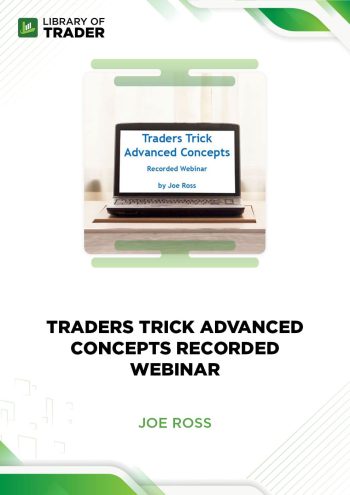 Traders Trick Advanced Concepts Recorded Webinar – Joe RossDOWNLOADTraders Trick Advanced Concepts Recorded Webinar – Joe RossUpdate 09 Nov 2022All LevelsDOWNLOAD
Traders Trick Advanced Concepts Recorded Webinar – Joe RossDOWNLOADTraders Trick Advanced Concepts Recorded Webinar – Joe RossUpdate 09 Nov 2022All LevelsDOWNLOADTraders Trick Advanced Concepts Recorded Webinar – Joe Ross mainly focuses on when to use TTE and when not to use it as TTE along with momentum brings many trades.
Add to wishlist -
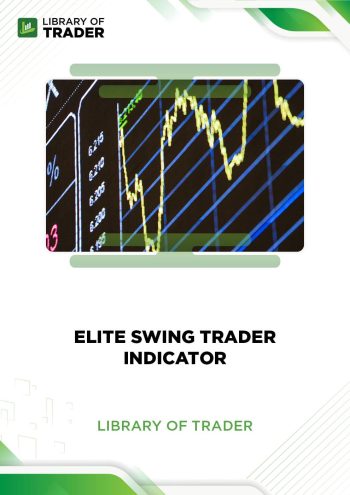 Elite Swing Trader IndicatorDOWNLOADElite Swing Trader IndicatorUpdate 20 Dec 2022All LevelsDOWNLOAD
Elite Swing Trader IndicatorDOWNLOADElite Swing Trader IndicatorUpdate 20 Dec 2022All LevelsDOWNLOADThe Elite Swing Trader System is a comprehensive Forex trading system for Metatrader 4. The momentum indicator is based on round levels and candlestick patterns. According to the original inventor, the indicator gives the greatest trading outcomes when coupled to larger time periods (H1, H1, D1).
Add to wishlist -
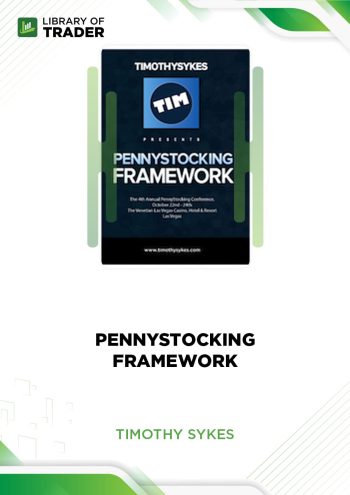 Pennystocking Framework – Timothy SykesDOWNLOADPennystocking Framework – Timothy SykesUpdate 17 Nov 2022All LevelsDOWNLOAD
Pennystocking Framework – Timothy SykesDOWNLOADPennystocking Framework – Timothy SykesUpdate 17 Nov 2022All LevelsDOWNLOADIn this Pennystocking Framework course by Timothy Sykes, you will learn the techniques and strategies being used to successfully day trade penny stocks for over a decade.
Add to wishlist -
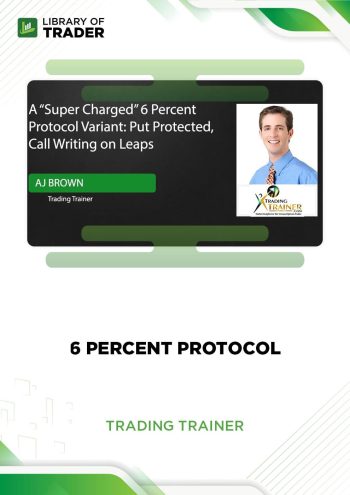 6 Percent Protocol – Trading TrainerDOWNLOAD6 Percent Protocol – Trading TrainerUpdate 10 Nov 2022All LevelsDOWNLOAD
6 Percent Protocol – Trading TrainerDOWNLOAD6 Percent Protocol – Trading TrainerUpdate 10 Nov 2022All LevelsDOWNLOAD6 Percent Protocol – Trading Trainer is an automated way to earn up to 32% trading the markets – in 4 weeks or less. This is the laziest way to potentially 2x your portfolio.
Add to wishlist -
 New Foundations for Auction Market Trading – Alexander TradingDOWNLOADNew Foundations for Auction Market Trading – Alexander TradingUpdate 09 Nov 2022BeginnerDOWNLOAD
New Foundations for Auction Market Trading – Alexander TradingDOWNLOADNew Foundations for Auction Market Trading – Alexander TradingUpdate 09 Nov 2022BeginnerDOWNLOADNew Foundations for Auction Market Trading is a comprehensive guided workshop to walk you through every detail of developing your trade plan.
Add to wishlist -
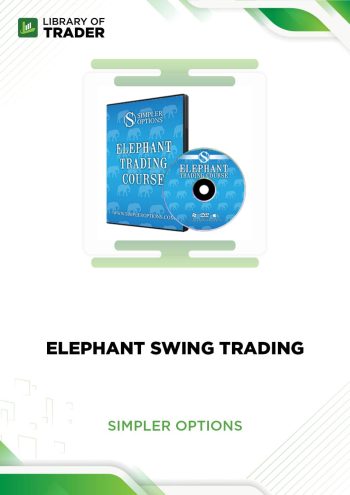 Elephant Swing Trading – Simpler OptionsDOWNLOADElephant Swing Trading – Simpler OptionsUpdate 14 Nov 2022All LevelsDOWNLOAD
Elephant Swing Trading – Simpler OptionsDOWNLOADElephant Swing Trading – Simpler OptionsUpdate 14 Nov 2022All LevelsDOWNLOADElephant Swing Trading by Simpler Options walks you through techniques and strategies for profitable swing trading with minimal risks through real-world case studies and examples.
Add to wishlist

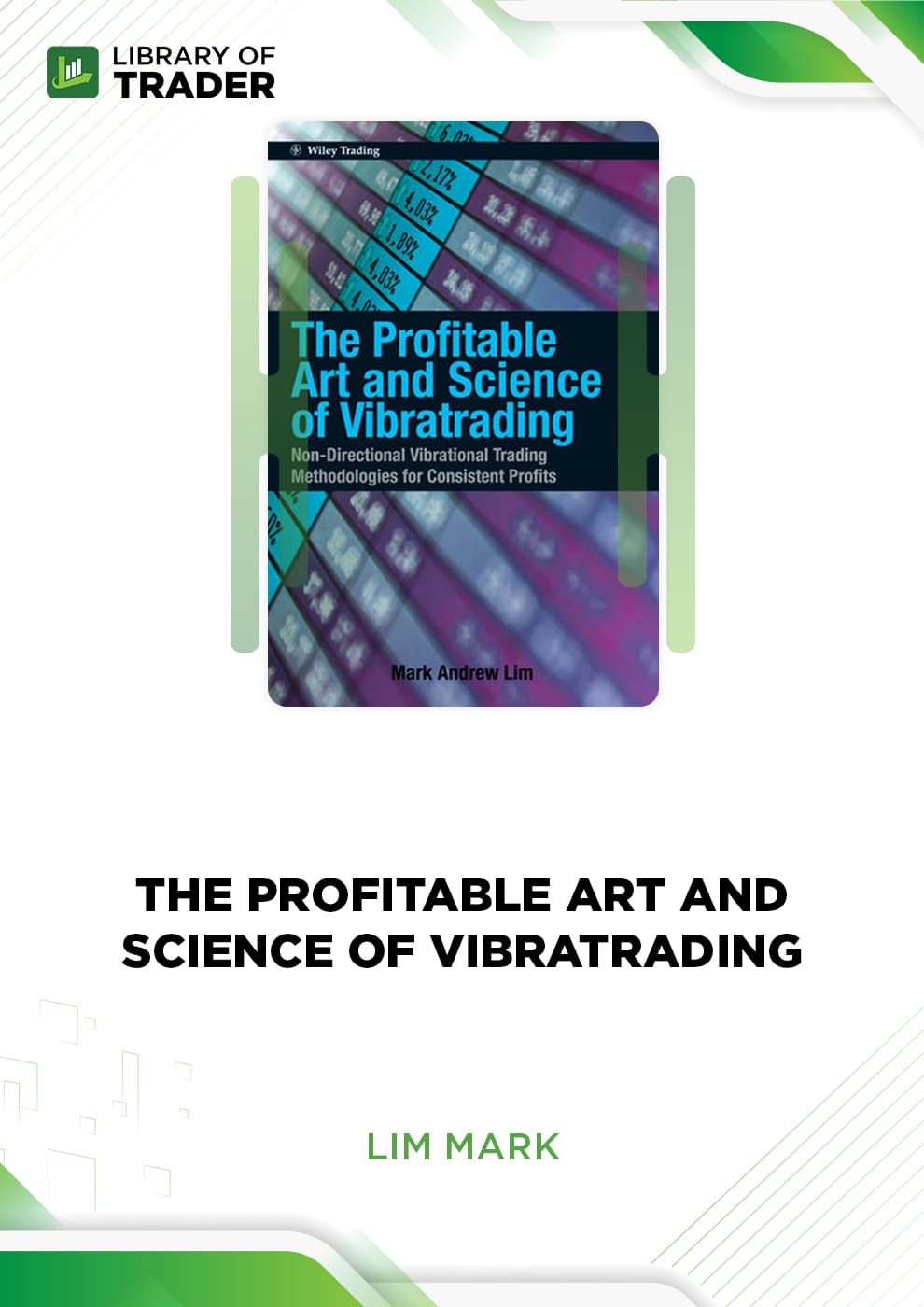

Reviews
There are no reviews yet.